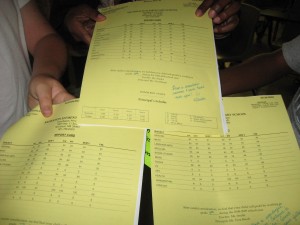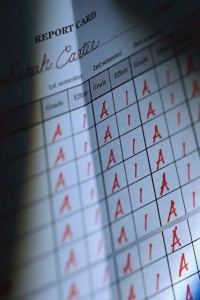We’ve been looking at report cards, and we’ve seen that the GPA (grade point average) is an important part of the information conveyed by the report card. GPAs become increasingly important as a student gets older. GPAs are used (1) to determine who is eligible for the Honor Roll, (2) to determine a student’s class rank, and (3) in college admissions.
(1) Honor Roll: The school acknowledges its better students by listing them on the Honor Roll for the quarter. The exact criteria for inclusion on the honor vary from school to school, but a typical criterion might be a minimum GPA of 3.0 for Honors and a minimum GPA of 3.5 for High Honors. In college, this acknowledgement is usually called a dean’s list. Again, the concept is similar: students with a GPA above a certain value are included in the list.
(2) Class rank: The class rank is the position of the student relative to those in his class as determined by the student’s GPA. Thus, if a student has a class rank of 8, that means that his GPA is the 8th highest one for his class. Of course, it is more impressive if a student ranks 8th in a class of 200 students rather than a class of only 20, so many times the class rank will also indicate how many students are in the class: a class rank of 12/175 means that the student has the 12th highest GPA out of a class of 175 students.
(3) College admissions: There is much to be said about college admissions, and we will cover this in greater detail in a future Education Focus. Here we will just note that a student’s GPA is one of the more important criteria that colleges will consider when they review a student’s college admission application. The higher the GPA, the better, as it generally indicates that a student is a good student and will have a greater chance of success in college.


